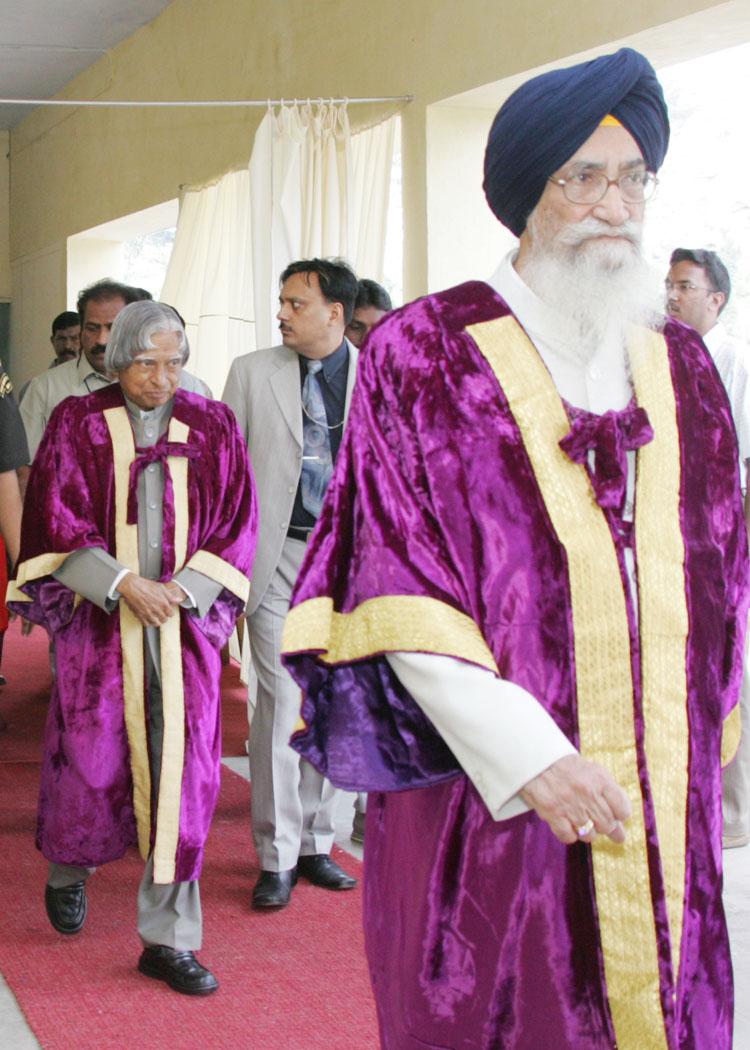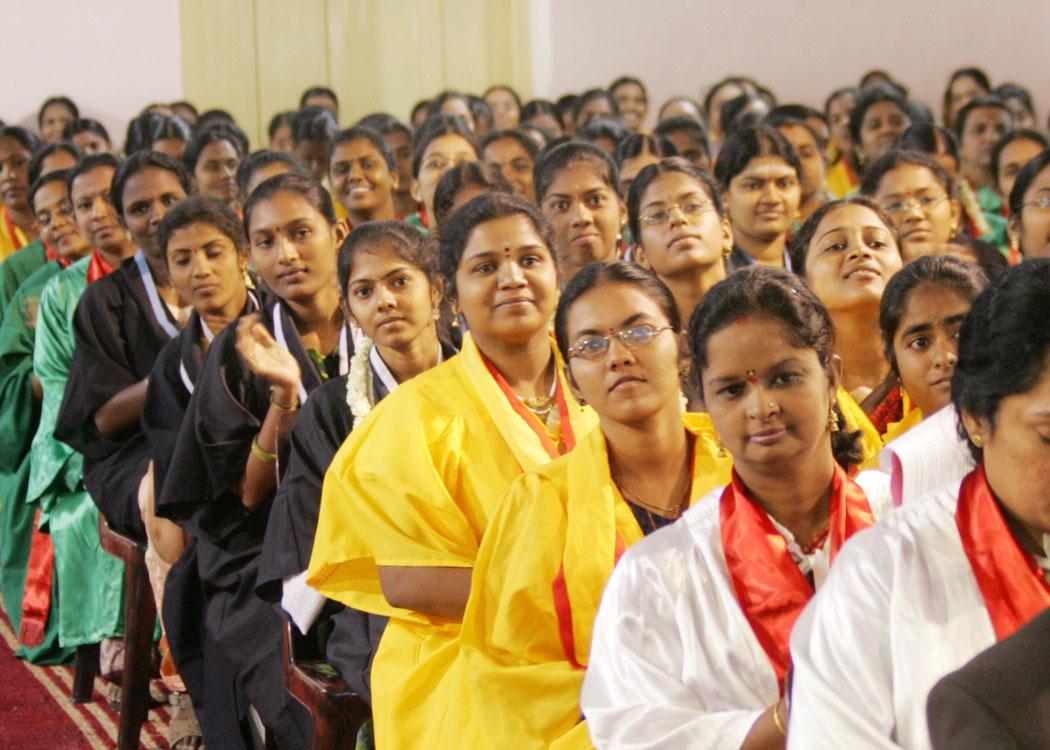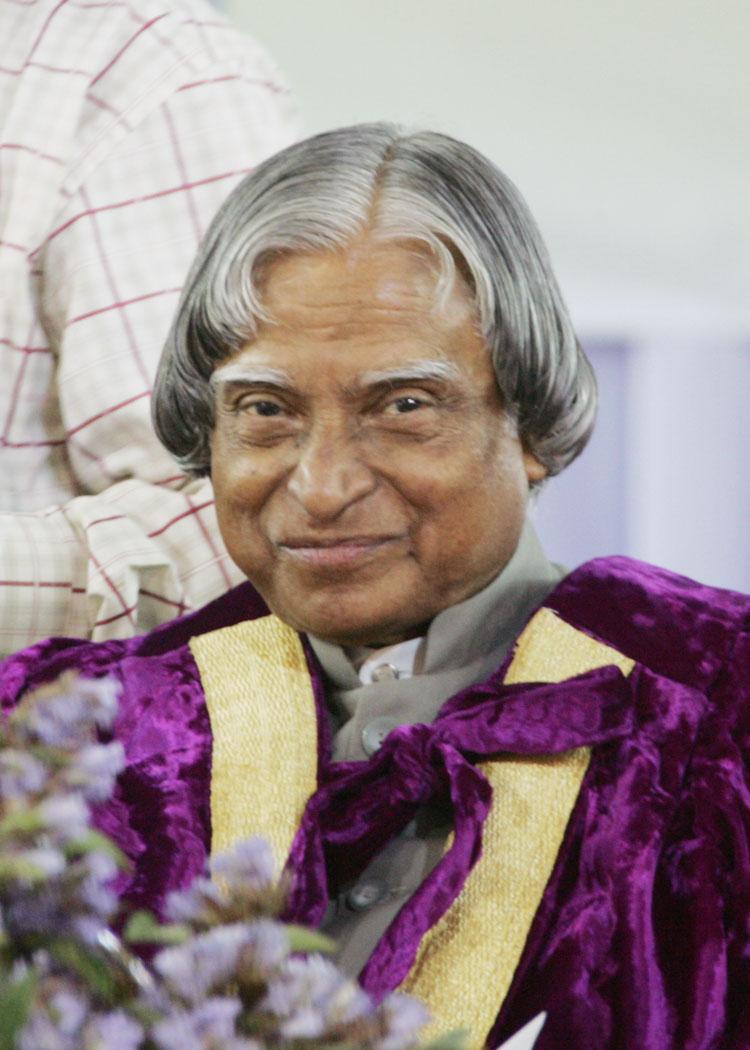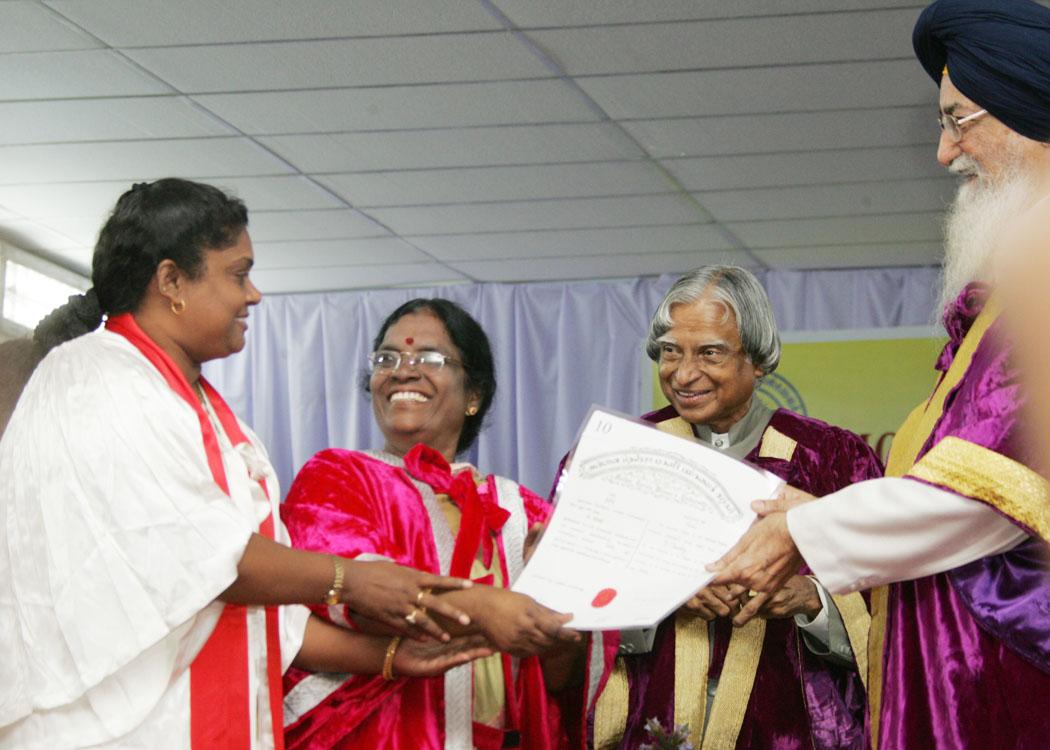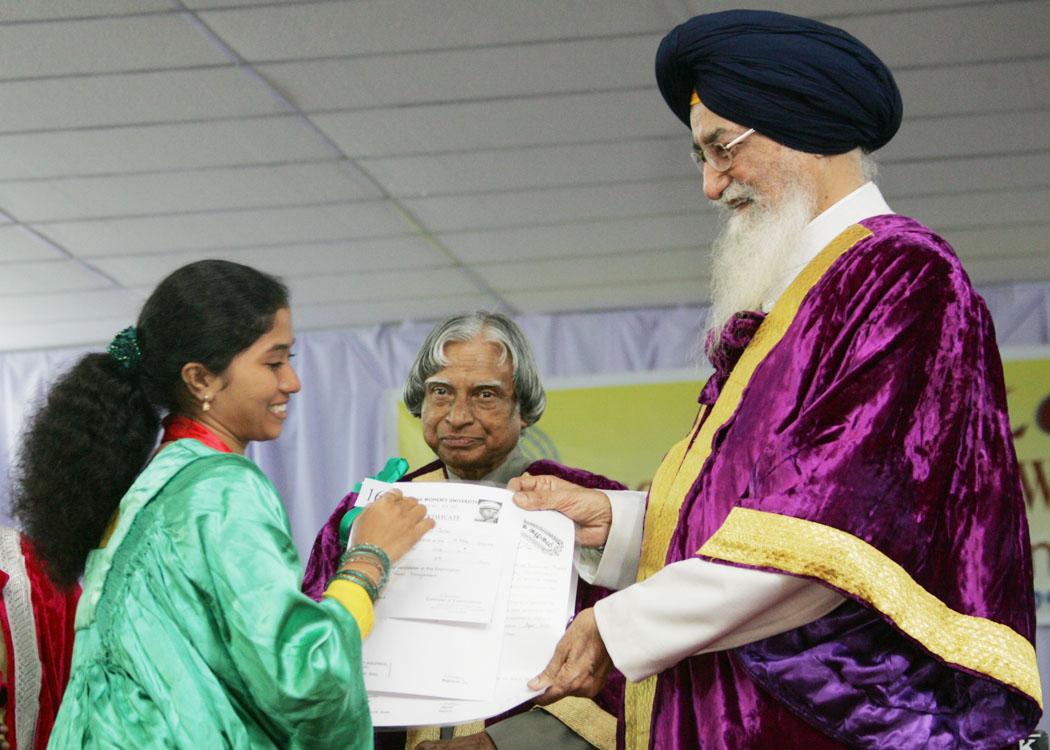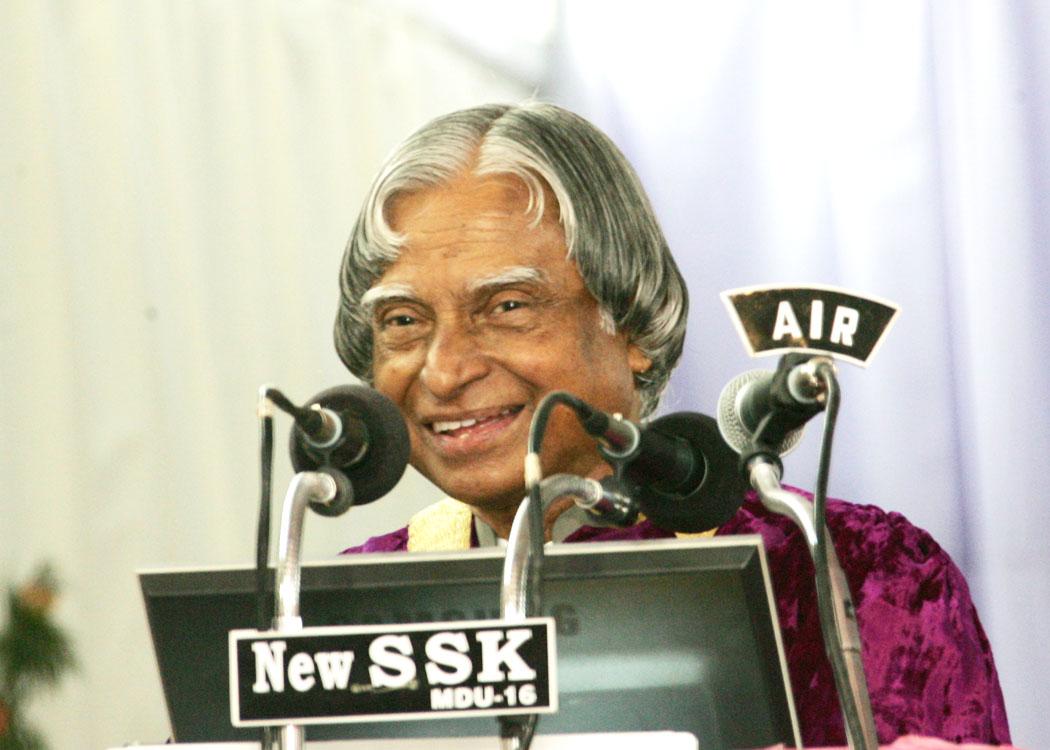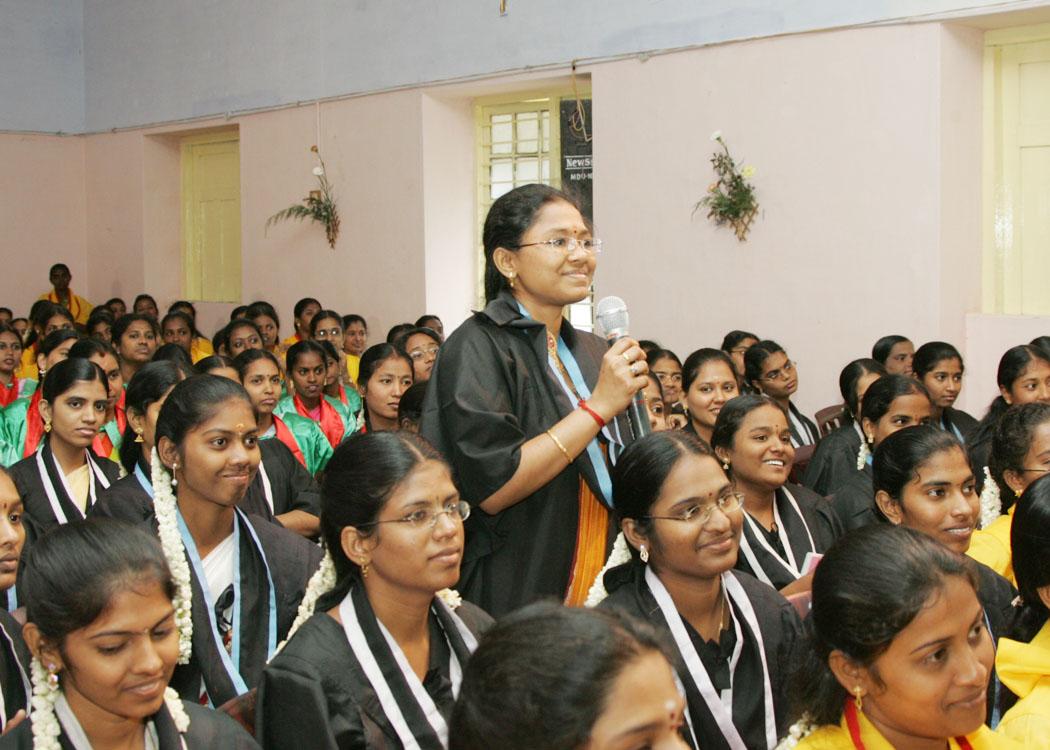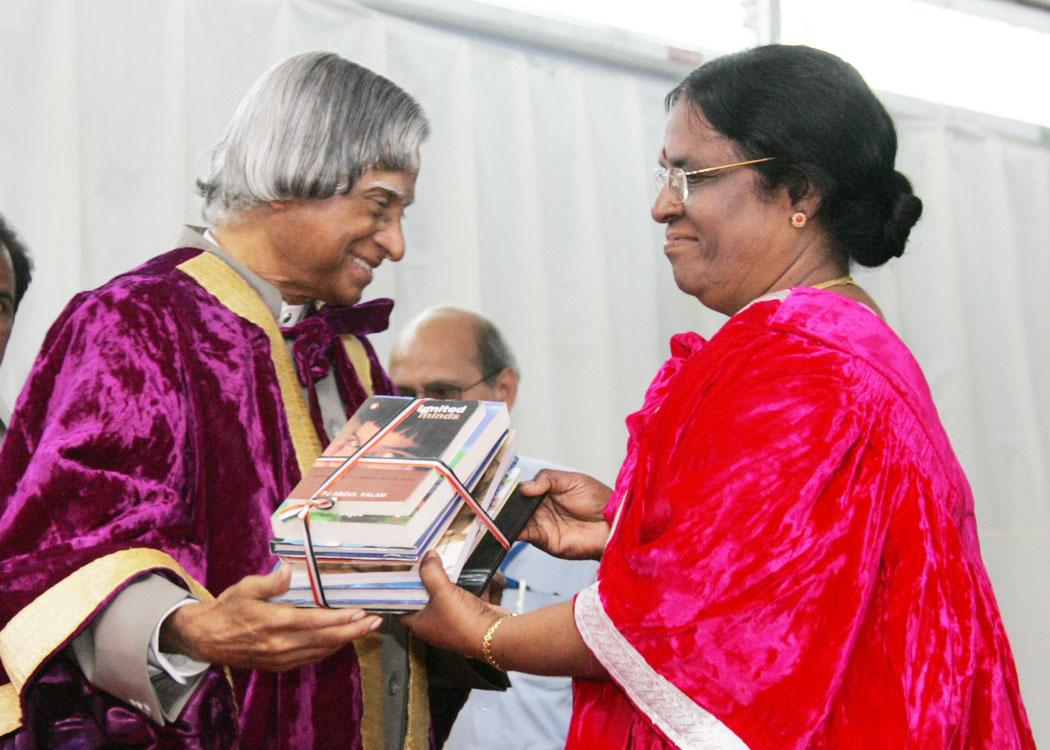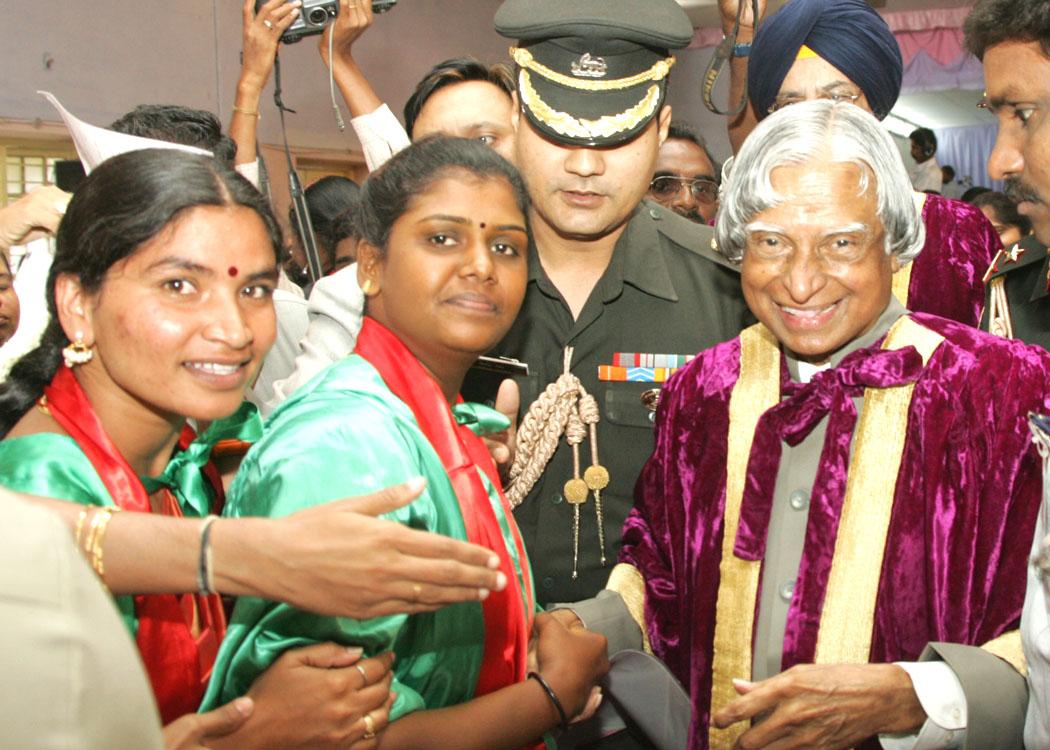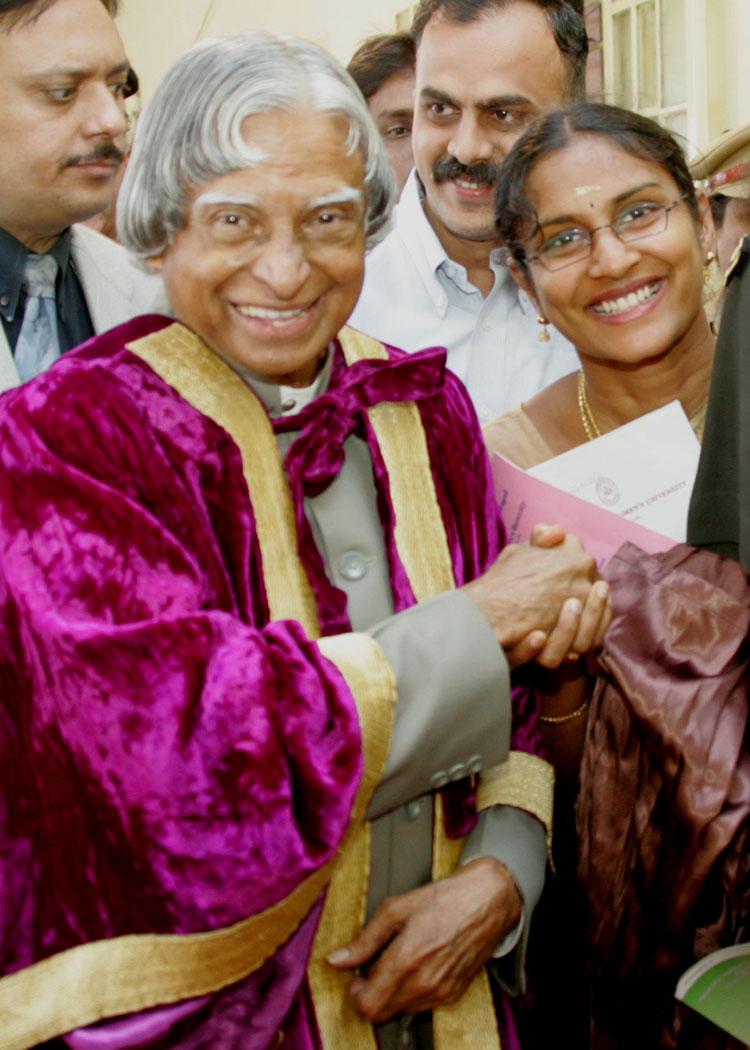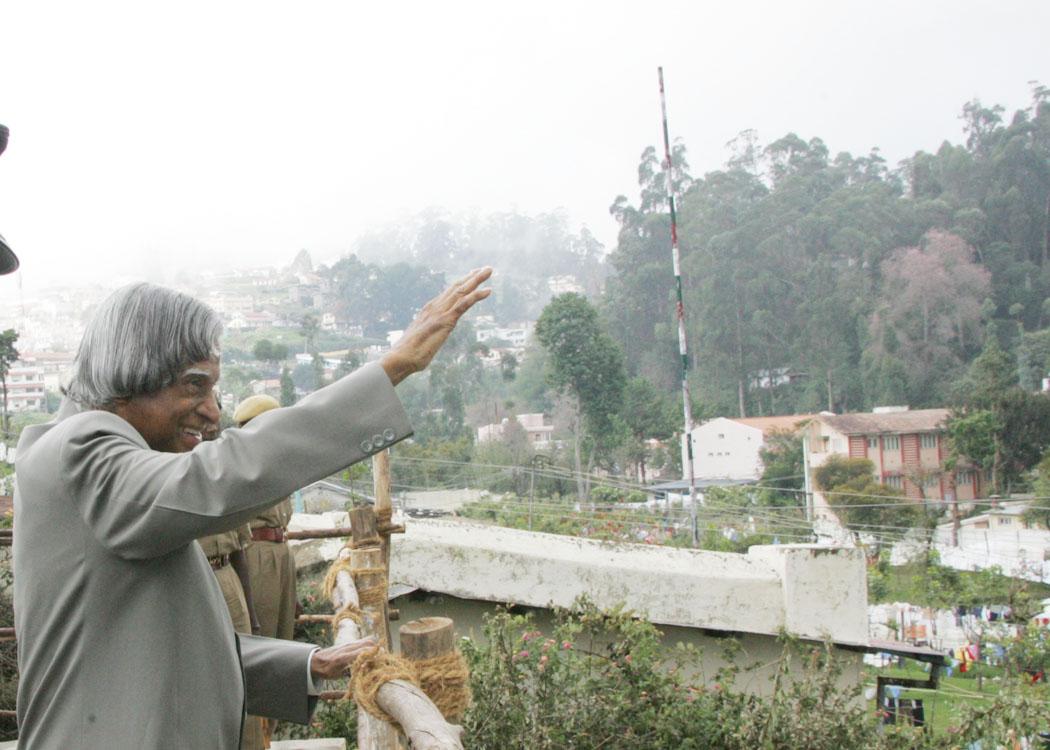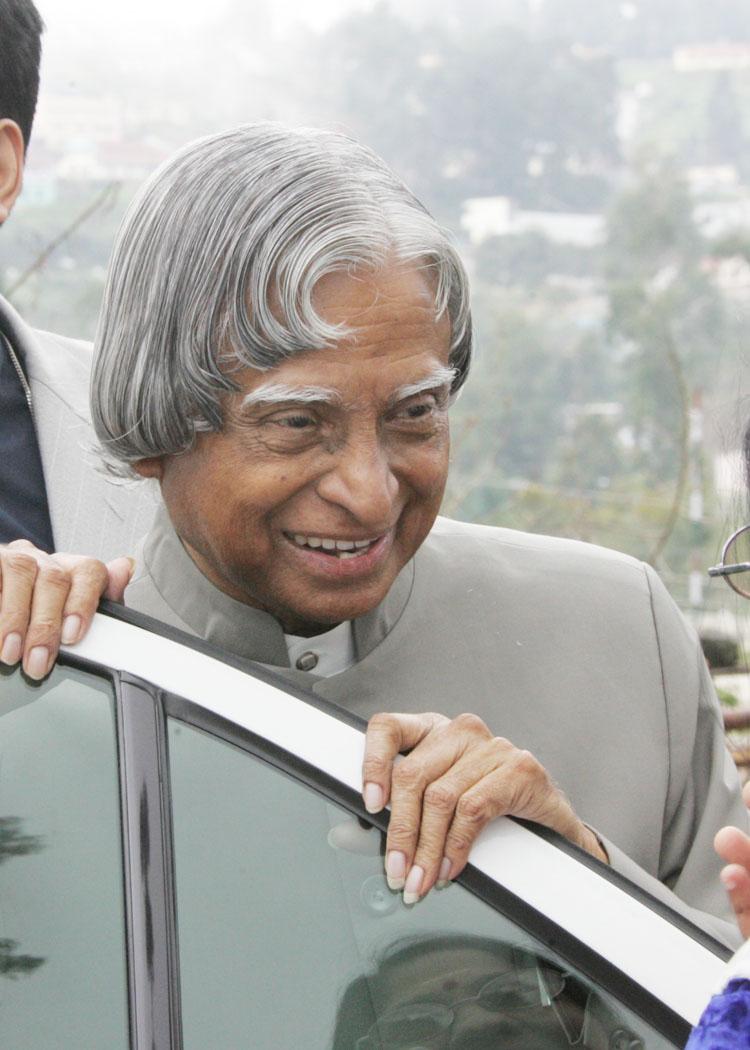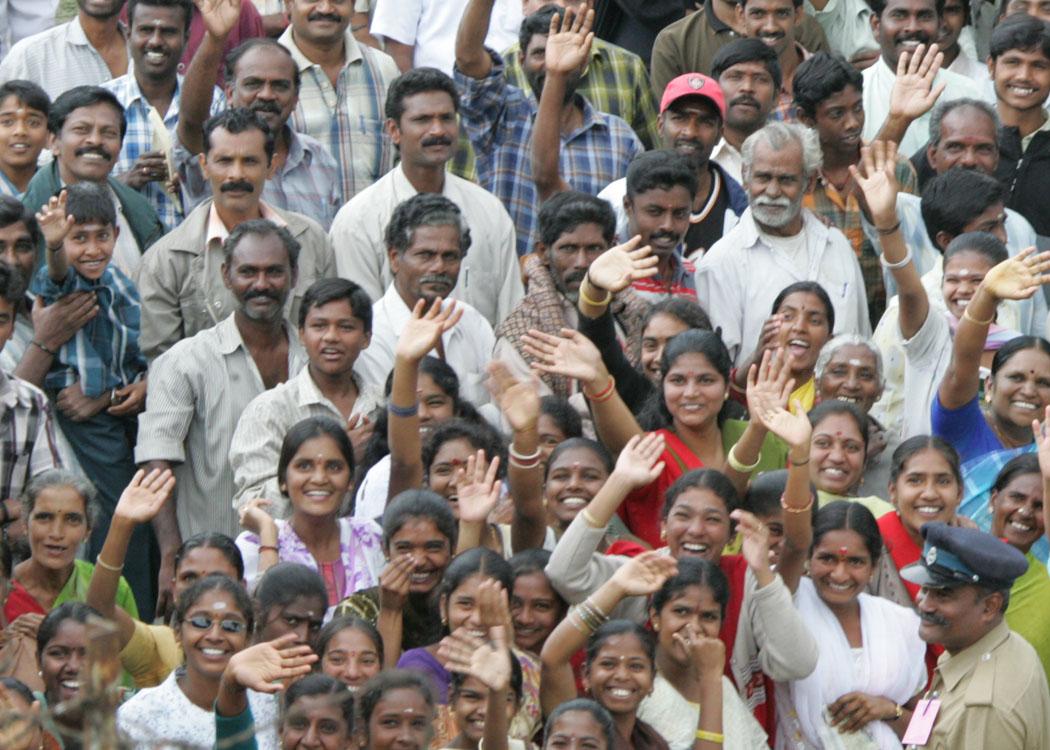Address at the 16th Convocation of Mother Teresa Women's University, Kodaokanal, Tamil Nadu
Kodaikanal : 23-09-2006
Empowered Women
"Emerging woman has a lofty
and knowledge based pride"
I am delighted to participate in the 16th Convocation of Mother Teresa Women?s University in the beautiful Kodaikanal environment. My greetings to the Vice Chancellor, Faculty members, students, staff and distinguished invitees. I congratulate the students for their academic performance and staff for shaping the young minds. I am happy to note that this University named after Mother Teresa who is a legend of our times, is doing pioneering work in the field of women?s empowerment especially of the tribal and rural women.
Aspirations of student community
On 17th August 2006, I visited and interacted with the students of Kanya Maha Vidyalaya at Jalandhar in Punjab. This Vidyalaya has been started in the year 1886 and college education for women had commenced in Kanya Maha Vidyalaya in 1914. Presently, the college has a strength of over 2500 students. While interacting with the students, I asked them what they would like to be after completing their education. About 10 students wanted to become doctors, 15 students wanted to become engineers, 30 students wanted to become administrators, five students wanted to become politicians whereas hundreds of students raised their hands when I asked the question how many of you would like to become teachers. I could see hundreds of children preferring to become teachers. This reveals how the way of teaching, the teachers way of thinking, parental guidance all leading to the conditioning of the children?s mind towards teaching as a career, even though the same school has created number of administrators, political leaders, engineers and doctors. Also the thinking process of the students is influenced by employment opportunities. Since I am in the midst of the Members of Women University, I thought of sharing with you this information. I would like to know what is your life?s ambition, we may discuss at the end of the convocation.
I would like to discuss Madam Curie's life which has been full of challenges. She was not afraid of the problems, she defeated the problem and succeeded. This experience of Madam Curie will definitely be an inspiration for all students of the present and future generations.
Madam Curie - a dream for every student
Madam Curie was a co-worker of Henri Becquerel during research, who discovered the properties of the element uranium. Curie came to know about those properties and set about investigating the effect, which she named "radio-activity" for her Doctorate research.
Marie Curie checked many other elements to determine whether they too were radioactive. She found one, thorium, and also came across a source of radiation in a mixture called "pitch-blend," which was much more powerful than either thorium or uranium.
Working together, it took Marie and her husband Pierre four years to isolate the radioactive source in the pitch-blend. Madam Curie used to carry large quantity of pitch-blend on her head for extracting few grams of material in the laboratory which needed tons of ?pitch-blend?. That few grams of the material was her discovery. Marie named it as radium. For the discovery of radium, Marie and Pierre won a Nobel Prize in Physics in 1903, which they shared with their friend A Henri Becquerel. Shortly, Marie found that what she had discovered was not pure radium, but she was able to isolate the element itself after quite a struggle. For this work, she was given the Nobel Prize for Chemistry in 1911.
During her work, Marie discovered radiation could kill human cells. She reasoned that if it could kill healthy human cells, it could kill diseased human cells also and went about isolating radium for use in killing tumors.
In 1906 Pierre Curie was offered the position of director of the Physics Laboratory at the Sorbonne. Before he could take the position, however, he was run over by a carriage and killed. After her husband died, Marie was offered and took the position, the first woman to become director of a research laboratory. In our country time has come for talented women scientists to take up the position of directors of major scientific laboratories.
During the first World War, Marie Curie went to work for the French designing and building X-ray machines. Knowing that moving soldiers to a hospital before they needed surgery was not always possible, she designed the first mobile X-ray machine and traveled with it along the front lines during the war.
On July 4, 1934, Marie Curie died in Paris, killed by her own experiments. She died of radiation poisoning and may have been the first person to do so. Marie Curie had brought herself up from poverty, struggling to get her education and succeeding brilliantly. The work she did, she did with patience, often getting results only after years of careful experimentation, while struggling for money to support her work. For her struggles, she received two Nobel Prizes - the first woman to win even one. Through the knowledge she gained, thousands of lives have been saved. The courage and perseverance shown by Madame Curie in her pursuit of scientific mission and achieving successes are indeed remarkable and stimulating.
I have studied the professional profile of four women of different institutions in our country. They shared their experience with my team and brought out how they came up in life through perseverance and hard work. This study will reveal the inherent capabilities of women undertaking challenging missions.
Scientist with Technology Mission
Smt Rohini Devi is the senior most woman Scientist working in DRDO and is known to me for over two and half decades. She is the recipient of Best Women Design Engineer Award and has been declared best engineer from Andhra Pradesh She joined DRDO immediately after her college in the year 1977 from IIT Chennai and has been working for the last 29 years towards the development of advanced processed technologies, establishment of facilities and development of state-of-the art products which have to withstand the rigours of re-entry. Multi-directional pre-form technology is a closely guarded secret of the western world. By pooling up the research talent in the country through a consortium approach and nurturing the young minds, she could successfully develop products which have been put to operational use in Agni class of missiles. One of the interesting products which she developed is the carbon brake disc for LCA. The project team was wavering whether to follow the import option or to continue with the indigenous development with a strict time frame. All over the world, it has been reported that such a brake pad has not been developed apart from few developed countries. One of the leading manufacturer from the west challenged the programme that it will be nearly impossible to make in the country and they were offering a total solution at a very heavy price. Instead, the project team took the courage and encouraged the indigenous effort being piloted by Smt Rohini Devi. As expected in many such missions initially the product did not give the required wear rate though it was meeting the required brake performance. That is where the teams headed by Smt Rohini Devi worked hard for scientific solutions and through perseverant scientific endeavour overcame the barriers and realized the wear rate prescribed by the project. This technology solely developed in the country has numerous spin-offs and applications in the civilian sector. Now the same team is working on carbon nano-tubes and also developing functionally graded material which will eventually revolutionize the materials used in aerospace and defence.
This shows the courage innovative spirit and commitment of a women scientist to ?make the impossible, possible?. Smt Rohini Devi says her parents and teachers supported her fully during her education. She never took any advantage for being a women. She was the only women student in the engineering course but she never felt any different compared to the boys. She states that DRDO has provided an excellent working environment for women scientists. The scientists are sensitive to the problem of women and they provide them adequate encouragement and support so that women scientists can contribute their best for research and development. Through Rohini Devi?s experience the message we get is that progressive institutions nurture women scientists by providing a suitable environment.
Great Leadership experience from Indian Bank
The experience how Indian Bank succeeded recovering from difficult time is indeed an experience not only for Indian Bank but for the banking system in the country. At this point, I would like to recall the discussion I had with the former Chairperson of Indian Bank, Smt Ranjana Kumar who gave me her experience in transforming Indian Bank to its present status. She remembers with a sense of pride, warmth and gratitude the team work of the entire Indian Bank family in making this turn around possible.
Indian bank radiates confidence of management
Following are some of the noteworthy interventions made by Smt Ranjana Kumar for the revival process:-
a. Utilizing the existing manpower and retraining them to get the desired objectives of revival without resorting to change of manpower.
b. Promoting an effective communication methodology between the top management to all the functionaries of the bank up to the grassroots level.
c. Making the total Indian Bank team as partners in the revival process through mutual trust and confidence and a transparent system of decision making.
d. Progressively increasing the level of delegation and transforming a centralized organization into an effective decentralized profit centres.
e. Working on the strengths.
f. Acknowledging the contribution and the sacrifices made by the team members during the reengineering process.
g. Realizing the importance of nurturing people at all levels through intensive tailor made training programmes.
h. Reviving customer confidence.
When she took over the bank in May 2000, the bank had an accumulated losses exceeding the capital and reserve and the bank had incurred a further loss of Rs. 778 Cr. for the financial year 1998-99. From this situation, she turned around the bank to a profit of 33 Cr. within a year after her taking over through a goal oriented programme by making the whole bank team a partner in the recovery process. I am sure many of you would like to emulate Smt Ranjana Kumar while facing the challenges coming in your way in your future life.
Space Technologist
Now, I would like to talk about a senior scientist Smt. Geeta Varadan, Project Director, Special Projects. She has been awarded First Women Scientist Award by Astronautical Society of India. in 2006. She comes from a middle class family of six members. Her father had vision that the children should be given education so that they are able to stand on their own legs in times to come. He never distinguished a male child from a female child and gave equal opportunity to all the children and her mother stood like a pillar to enforce the will of her father. Smt. Geeta Varadan, was a high performing student in the school and the college. When she completed her graduation from Osmania University, her father insisted that she should complete her M.E before taking up a job. She did her ME in Indian Institute of Science, Bangalore and joined LRDE, a DRDO laboratory in Bangalore in 1976. She remembers the advise of her senior scientist Mr. Jaiswal that the young scientists normally should get the best of experience of many team members around her. She found all the members in the laboratory were helpful to her and enabled her to perform well in her task. While her husband was moved to Hyderabad for better prospects she also got a posting to Hyderabad. She took up a job in NRSA and she had a unique experience in that establishment. When the teams were being formed for the first operational Remote Sensing Satellite (IRS-1A), her name was no where there. She went and enquired from her senior why her name was excluded. She was told that since husband was in Saudi Arabia she may leave the job anytime and go. She told her senior that, she was in NRSA not because of her husband but by her own merit. She also committed that she will not leave the job till she completes the assignment. This ensured her inclusion in the project team. Later in 1984, she had to ask for a transfer to Bangalore in view of her husband coming back to Bangalore. Dr.Y S Rajan who was the then Scientific Secretary, ISRO told her that she could not be moved to Regional Remote Sensing Service Centre at Bangalore since she was a hardware specialist. For this, she responded that she will undertake any job assigned to her and ensure its completion successfully. On this assurance she was transferred to Bangalore and she also became the leader for establishing 9 remote sensing centres throughout India. Presently, she is working as the Project Director for Special Projects at ISRO Headquarters. Geeta Varadan is one of the well known experts in remote sensing satellites. In this capacity, I had met her and found to be very scientifically talented. According to Smt. Geeta Varadan, for success, one should work very hard without expecting any return, recognition will come by itself. Never ask any special favour being a lady. Ladies have to put twice as much effort as a man to be recognized at par with him, since ladies have dual responsibility. The message we understand from Smt. Geeta Varadan is knowledge with courage is essential for building a high scientific career.
Excellence in Brain Research (Neuro Science)
I was studying the scientific profile of Prof Vijayalakshmi Ravindranath who is presently working as Director, National Brain Research Centre and is a well known Brain research scientist in India. She has been a hard working student right from her childhood. She says that Mr. A.K. Raman, her father influenced her by instilling in her the value of hard-work, striving for excellence and the importance of integrity and honesty. He also believed that education was very necessary for women and that it would always prove to be a valuable possession rather than inherited wealth. He encouraged her to study science much against the wishes of her grandparents who were very keen to get her married immediately after graduation. Due to her father?s influence she completed her Master?s degree in Chemistry and got married to Dr. B. Ravindranath who is also a scientist. Success of Dr. Vijayalakshmi Ravindranath in many of her projects was the result of the support and encouragement that she received from her husband. He advised her to always stand up for what she believed in and not to ever compromise her principles. She claims that family support is very essential especially for a women scientists wherein professional success is rare and failures and frustration are often a way of life. In addition to her family members she had excellent mentors, her Ph.D supervisor Dr. Raghavendra Rao (at CFTRI, Mysore) and Dr. Michael Boyd, her mentor during her Post-Doctoral Fellowship in USA who have supported and encouraged her. After her return from US, in the initial years of her scientific career in India, Dr. Boyd had helped her tremendously by often sending chemicals and other resources that ensured that her research could go on. One factor Dr. Vijayalakshmi feels is that there is a lack of consultation with women scientists in organizations which makes them feel isolated in the system. The message we get from Dr. Vijayalakshmi?s experience is that the organisation has to take the women scientist into confidence and provide them adequate space for scientific and technical communication.
Project Siruthuli - as a movement
This is an initiative started by Coimbatoreans for Coimbatoreans under the leadership of Ms. Vanitha Mohan. This ecological project aims to bring back the glory of Coimbatore and its rich heritage. The project is represented by people from all walks of life and professionally organized. The primary focus is on large scale rain water harvesting, afforestation, sewage/waste water treatment and solid waste management. They have already standardized five of the nine primary tanks in Coimbatore for large scale rainwater harvesting. Over 1.5 lakhs saplings have been planted on the bunds of the de-silted tanks and are being maintained. They are moving towards a target of planting 15 lakh trees in and around Coimbatore. The comprehensive study has indicated outlet of the city sewage as 10 million liters per day. A pilot plant is being taken up for sewage treatment to treat one million liters per day. The treated water will be sold to the agriculturists and industrialists as a revenue earning measure. The garbage and debris to the extent of over 26,000 cubic meters in one of the city?s largest tank have been removed. This model can be replicated throughout the country.
Conclusion
I would like to share some of my experiences, where I have found women performing pioneering work in their area of specialization. In addition to the four great contributors for the nation, I have come across a number of women performing pioneering work in their specialization. For example, I met Smt Kanchan Choudhry Bhattacharya, the first women to become the Director General of Police of Uttaranchal in Mussoorie. I have seen many of the captains of the commercial aircrafts who are women pilots. In the health care and education sector women are leading. In political field also many women are playing a leading role. At Delhi, I met two very senior Air Force and Naval Officers, Air Marshal (Mrs.) P. Bandopadhyay, Director General, Medical Services (Air) and Surg. Vice Admiral (Mrs.) Punita Arora, Director General, Medical Services (Navy). They are doing pioneering work in medical field. On 27th June 2005, the Chief of Army Staff brought the first women summiteers Capt (Ms.) Sipra Majumdar and Capt. (Ms.) Ashwini AS Pawar, who climbed Mt. Everest from the North side, that is from the Tibetan side. I also talked to the women army officers in the freezing temperature at Kargil, when I met them at Kargil. I appreciate their courage and perseverance for succeeding in their missions. Dr. Shanta, a Raman Magsaysay award winner is responsible for setting up the Radiation Oncology Department in Cancer Institute and organized the first-ever hospital tumour registry in India. Above all the Nobel Laureate Mother Theresa represents the embodiment of removing the pain of the sufferings. These women who have performed pioneering work in their own area of specialization should become the leaders for young women.
It has been established that Indian women can do any type of mission from Himalayan expedition to aerospace mission, medical and teaching area and political arena. Of course you should dream, acquire knowledge, work with devotion and become women of action for the occasion to transform into a developed India.
Particularly, enlightened women are very important for nation building since their thoughts, the way of working and value system will lead to faster development of a good family, good society and a good nation. Thus, the women in all walks of life have tremendous opportunity for participating in the development of the nation.
Once again let me congratulate all the students passing out of this University today. My best wishes to all the members of Mother Teresa Women University success in their mission of empowering the women through quality education with value systems.
May God bless you.

